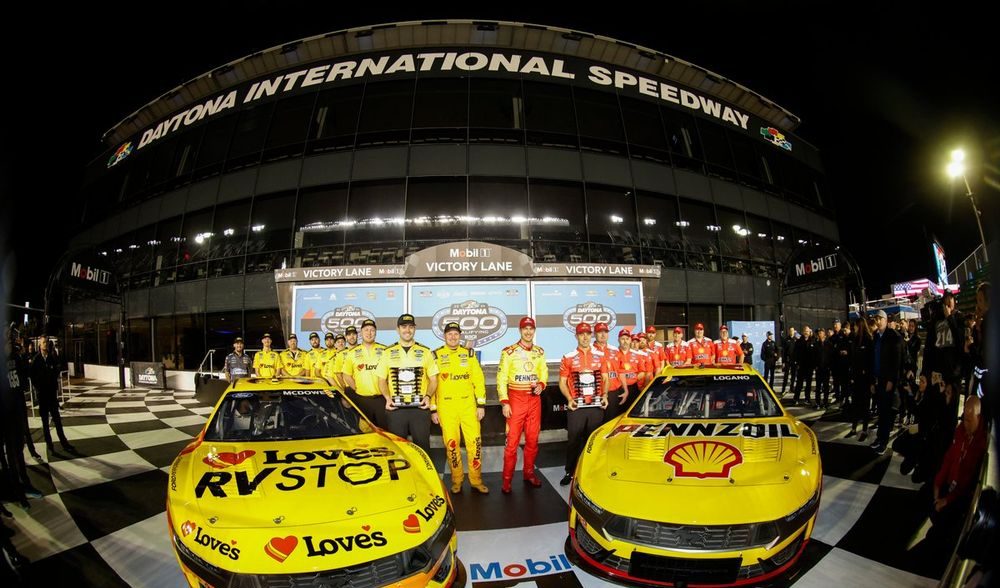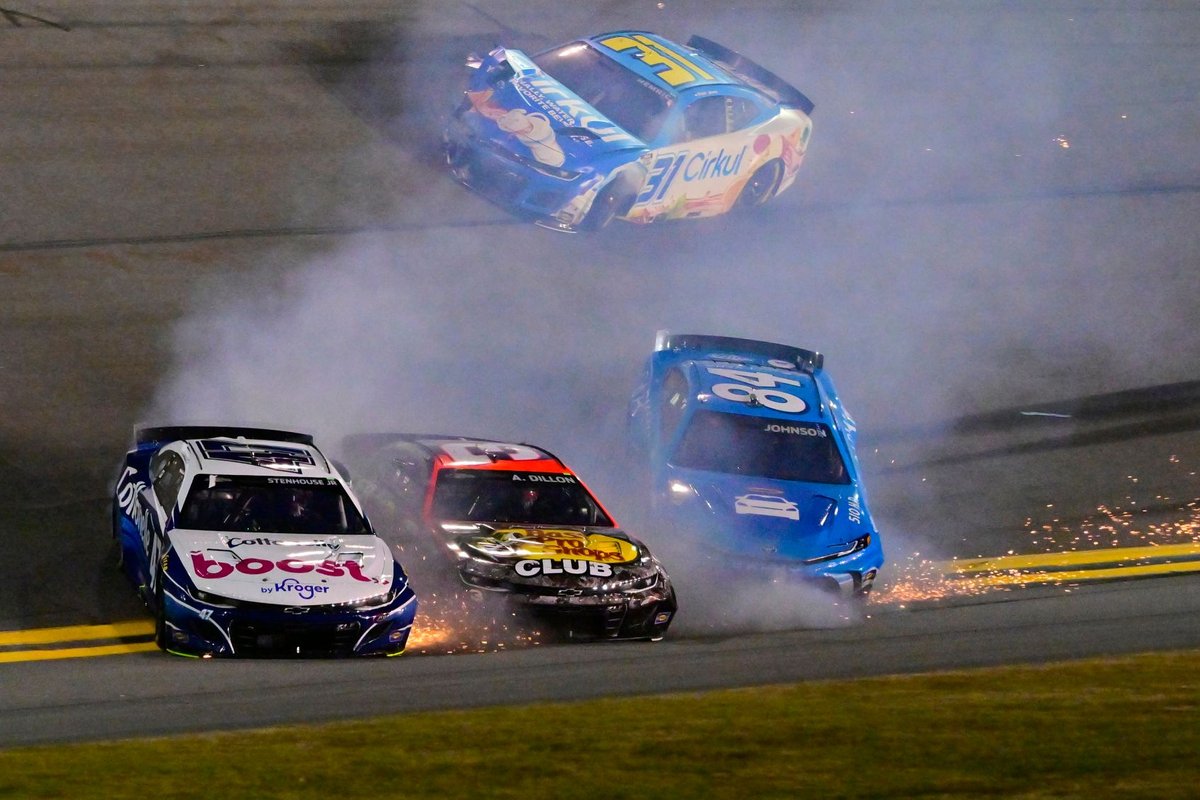After Denny Hamlin’s victory in the non-points exhibition race at the Los Angeles Memorial Coliseum earlier this month, Joey Logano secured the pole position for this weekend’s Daytona 500 season opener, leading a Ford front-row lockout during Wednesday night’s qualifying session.
Logano and McDowell showcased the strength of the new Mustang by securing the front row in qualifying.
Thursday night’s twin 150-mile qualifying races determined the rest of the grid, with Jimmie Johnson among the two unchartered drivers who claimed the final spots in the 40-car field for NASCAR’s premier event.
In addition to featuring new drivers and venues, the 2024 NASCAR Cup season introduces updated entries from Toyota and Ford. Toyota Racing Development and Ford Performance are set to debut new iterations of their Camry and Mustang race cars, respectively.

Ford revealed its new Mustang version for the 2024 competition in early November, based on the Mustang ‘Dark Horse’, the seventh generation of the iconic model.
Since its introduction to the Cup in 2019, the Mustang has clinched a manufacturers’ championship and secured a series-leading 18 wins in 2020, along with drivers’ championships with Team Penske’s Logano and Ryan Blaney in 2022 and 2023, respectively.
Following suit, Toyota unveiled its new Camry XSE race car for the Cup series competition later in the same month. The Camry XSE Next Gen follows the Toyota Camry TRD Next Gen, which amassed 18 victories and 25 poles during the past two seasons.
The anticipated performance impacts of the new car bodies remain speculative, with limited on-track testing and only a short exhibition race completed before the season’s commencement. Much of the expected performance gains have been extrapolated through computer models.
“All the tools we use – the wind tunnel, the CFD – all of that carries back and forth,” says Richard Johns, Ford’s NASCAR performance leader. “So, what we learn in the development of the Cup car carries over to production and what we learn in production carries over to the Cup car. There’s a lot of technology transfer, especially on the aerodynamic side.”
Both car models boast visible differences from their predecessors, notably in the nose designs. The Mustang features sharp character lines leading to a more rounded nose, while the Toyota exhibits a distinctive hammerhead styling with updated slim and wide headlights.
Shane van Gisbergen’s victory in the Chicago Street Race last year for Trackhouse Racing added excitement to NASCAR in 2024. Despite not being a regular in the Cup Series, van Gisbergen’s achievement marked the first Cup triumph on debut in 60 years.
He will compete full-time in the second-tier Xfinity Series with Kaulig Racing to gain experience, while also participating in at least seven Cup events throughout the season.
In other notable driver moves, Josh Berry graduates to Cup in the #4 Stewart-Haas Racing Ford following Kevin Harvick’s retirement. Noah Gragson joins SHR to drive the #10 machine vacated by Aric Almirola, while Xfinity standout John Hunter Nemechek takes over Gragson’s former seat.
Justin Haley moves from Kaulig to Rick Ware Racing’s #51 entry, while Carson Hocevar replaces Ty Dillon at Spire Motorsports, driving the #77. Additionally, Richard Childress Racing may see reigning Supercars champion Brodie Kostecki join their ranks, potentially alongside fellow Supercars star Cam Waters.
Seven-time champion Jimmie Johnson’s return to NASCAR with Legacy Motor Club has garnered significant attention.
Johnson, who retired from NASCAR competition in 2020 and briefly switched to IndyCar, has opted to race a Toyota Camry, marking a major change after years with Chevrolet. Legacy Motor Club’s switch to Toyota also involves industry veteran Cal Wells stepping in as CEO, bringing extensive Toyota expertise to the team.
The 2024 NASCAR Cup season introduces several schedule changes, including the revival of the Brickyard 400 and the addition of Iowa Speedway to the calendar. Notably, due to the Olympics in Paris, NASCAR will take a two-week hiatus after the Brickyard 400, altering the playoffs’ first round.
Texas Motor Speedway will no longer host playoff races, while North Wilkesboro Speedway will host the All-Star Race for the second consecutive year.
While the Next Gen car has visibly enhanced racing on intermediate and superspeedways, efforts to improve short track and road course racing continue. New aerodynamic rules packages have been implemented for these tracks, based on driver feedback and aimed at encouraging more competitive racing.
The changes in the 2024 NASCAR Cup season promise excitement and intrigue, both on and off the track, as drivers and teams adapt to new cars, venues, and rules.

